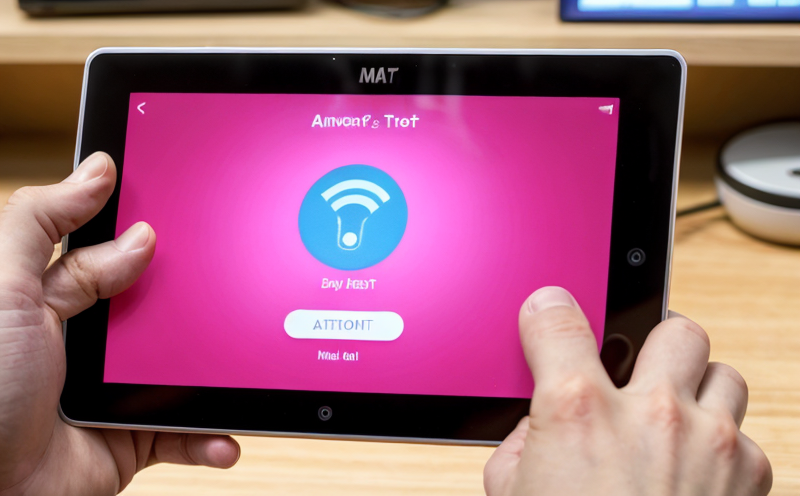Motion Sensor Accuracy Testing in IoT Devices
IoT devices are transforming our daily lives by integrating advanced functionalities into everyday products. Among these features, motion sensors play a crucial role in enhancing user experience and ensuring the seamless operation of smart gadgets. Motion sensor accuracy testing is paramount to guarantee that these sensors deliver reliable data for device operations.
Consumer electronics such as wearable devices, home automation systems, and fitness trackers all rely on accurate motion detection to function correctly. For instance, a smart thermostat using motion sensors should accurately detect human presence to adjust heating or cooling efficiently. Similarly, in the case of a wearable fitness tracker, incorrect sensor readings could lead to inaccurate health data being recorded.
The accuracy of these sensors can be influenced by various factors including environmental conditions like temperature and humidity, as well as the device's position relative to the user. This makes it essential for laboratories specializing in consumer product testing to provide comprehensive motion sensor accuracy testing services. By employing state-of-the-art facilities and adhering to international standards, we ensure that the devices meet strict performance criteria.
One common challenge faced by developers is ensuring that their sensors function consistently across different environments and user behaviors. Our lab uses advanced test protocols that simulate real-world conditions to identify any discrepancies in sensor output. This allows manufacturers to refine their products before they reach the market, thereby reducing potential issues for end-users.
We also offer detailed reports on each test conducted, highlighting areas where improvements are needed and providing recommendations for enhancing overall performance. These insights not only help developers improve their current models but also guide future product development efforts towards more precise sensor integration.
Applied Standards
| Standard | Description |
|---|---|
| ISO/IEC 17025:2017 | This international standard specifies the general requirements for the competence of testing and calibration laboratories. Compliance ensures that our tests are conducted under controlled conditions, providing consistent results. |
| ASTM E2383-16 | American Society for Testing and Materials standard which provides guidelines for the performance of motion sensors in various applications. It helps us ensure that our tests meet industry expectations regarding sensor accuracy. |
Quality and Reliability Assurance
At [Your Lab Name], we prioritize quality assurance in all aspects of our testing process. Our team follows rigorous procedures to maintain high standards throughout each step, from initial setup through final evaluation. By doing so, we can provide clients with confidence that their products have been thoroughly tested and validated according to the highest industry benchmarks.
Our commitment extends beyond just meeting regulatory requirements; it includes continuous improvement efforts aimed at staying ahead of emerging trends in technology and testing methodologies. We invest heavily in training our staff on new techniques and technologies so they can stay current with best practices.
In addition to internal quality controls, we also welcome external audits from recognized bodies to further validate the reliability of our services. This commitment to excellence ensures that any product subjected to our tests will receive thorough scrutiny before being declared fit for purpose.
Competitive Advantage and Market Impact
The ability to accurately test motion sensors in IoT devices provides a significant competitive advantage. By ensuring consistent and reliable performance across all models, manufacturers can build trust with consumers who value precision and dependability in their connected products.
Achieving this level of accuracy also sets companies apart from competitors by demonstrating a commitment to quality and innovation. As more industries adopt IoT solutions, having accurate motion sensors becomes increasingly important for maintaining user satisfaction and ensuring long-term success.
Furthermore, accurate motion sensor testing supports regulatory compliance, which is crucial given the growing number of regulations governing the use of connected devices. Meeting these requirements not only avoids legal penalties but also enhances a company’s reputation as an industry leader in responsible innovation.





